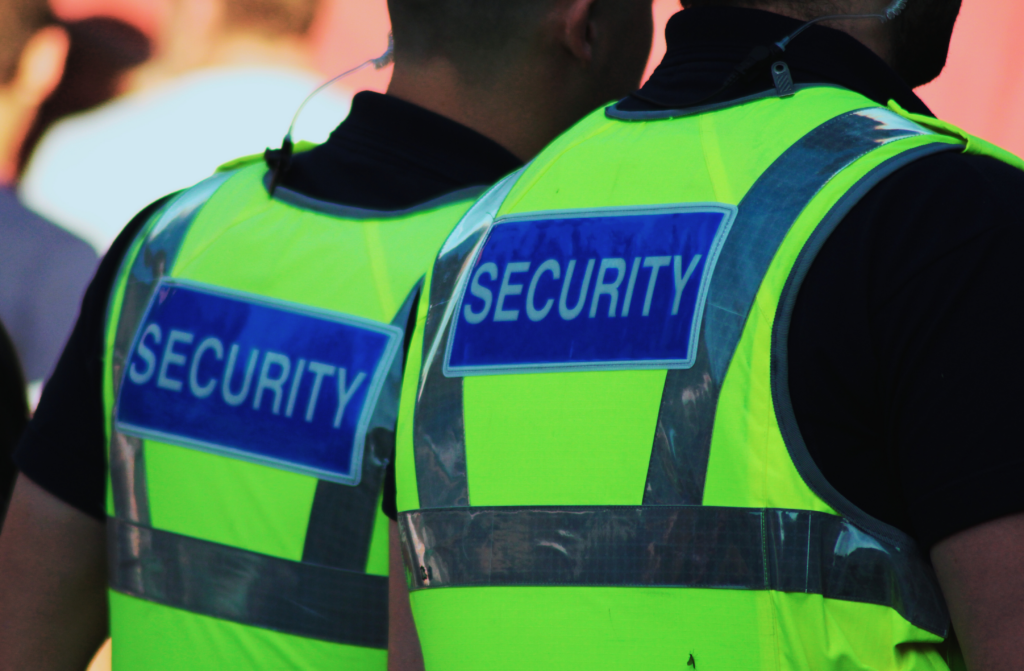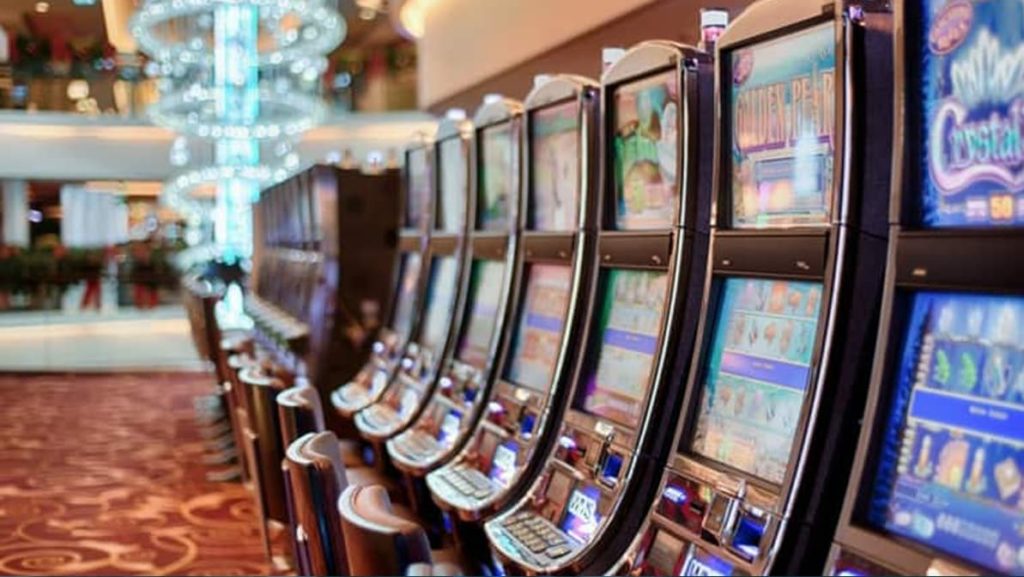We constantly see the results of security lapses in the news. Whether it’s at a presidential candidate’s speech, a concert, or a street party, people are right to be concerned about their safety in public.
A whopping 57% of global event-goers are seriously concerned about data theft on public Wi-Fi. And it doesn’t stop there—more than one in five Americans have thought about ditching their plans to attend big gatherings due to fears for their physical and cyber safety.
Security measures during events can be improved. To evaluate all potential scenarios, it’s helpful to begin by completing a physical security assessment. The assessment looks at personnel, facilities, and assets to help make the event as safe as possible before it even begins.
How the event security assessment process works
Event organizers, security teams, and stakeholders all contribute to event security and can provide input on improving processes.
Follow these steps:
Identify possible threats. What’s the likelihood of theft, physical attacks, vandalism, or data breaches? How could these escalate into dangerous situations? What would be the impact on attendees and the venue? By answering these questions, security teams can begin the assessment process.
- Check access. Where can people get in? Where are the vulnerable spots? Beforehand, take whatever steps you can take to prevent unauthorized access.
- Know how to detect a breach. What technology are you using to determine if there is a breach? Consider motion sensors, glass break and vibration sensors, and video analytics.
- Monitor systems. Test the system, ensure a backup system, and have a plan in place. Continuously monitor security systems, both on-site or remotely.
- Reduce risk. Of course, there’s no way to eliminate all risk, but what are you planning ahead of time for crowds, exits, bags, the perimeter, and cybersecurity?
- Have open communication. No surprises! The security team needs to communicate with the people organizing the event who already know the weak spots. By working together, the event will be even safer.
Enhanced risk reduction strategies
Once the assessment is done, the plan can be created. Physical security begins with a two-part approach – first, proactive measures, and next, response tactics.
Crowd control
Beyond traditional barriers, modern crowd control can use advanced technology. Smart cameras with people-counting and flow analysis can identify potential bottlenecks and overcrowding, and real-time communication systems can help security personnel coordinate a fast response.
Using trained crowd management professionals who know de-escalation techniques is also important. These professionals understand crowd psychology and can diffuse tense situations before they escalate.
On a practical level, signs and digital displays can direct crowd flow and give helpful information.
Perimeter security
This is the first line of defense. Selecting the correct barricades and fencing can assist in making an event safe. Temporary fencing can be improved with anti-climb features and intrusion detection systems, and vehicle barriers like bollards or concrete blocks can help secure areas. It’s also helpful to have actual people patrol the perimeter, plus use cameras to catch everything not seen by the human eye.
Digital challenges
There is now a chance of cybersecurity threats, including hacking, data breaches, and the general disruption of online platforms for virtual and hybrid events. Protecting attendee data collected through event registration and mobile apps is another challenge.
A Distributed Denial-of-Service (DDOS) attack is a cybercrime in which an attacker floods a server with traffic to prevent users from accessing connected online services and sites. DDOS attacks can take down streaming and event sites. Encryption methods, as well as securing Wi-Fi networks, can help prevent unauthorized access.
Beyond access control, security guards play a vital role in surveillance, securing equipment, managing environmental controls, and responding to incidents. These activities are crucial for preventing cybersecurity threats by protecting infrastructure from unauthorized physical access and tampering.
Risks by event
Each event type needs a security plan that addresses its different risks.
Large-Scale Sporting Events
- Crowd Control: Managing large groups of people to prevent stampedes, fights, and maintain order.
- Traffic Management: Ensuring smooth entry and exit from the venue to reduce congestion and avoid accidents.
- Counter-Terrorism Measures: Implementing thorough security checks, surveillance, and coordination with law enforcement to prevent potential terrorist attacks.
Corporate Functions
- Insider Threats: Monitoring attendees and staff to prevent unauthorized access or sabotage by individuals with insider knowledge.
- Intellectual Property Theft: Securing confidential information and proprietary technology from theft during presentations and networking activities.
- Executive Protection: Providing personal security to high-profile executives, ensuring their safety from threats or attacks.
Festivals
- Crowd Density: Managing high volumes of attendees to prevent overcrowding and ensure safe movement within the venue.
- Substance Abuse: Addressing issues related to alcohol and drug use, including enforcement and medical response.
- Emergency Medical Response: Providing on-site medical teams to quickly respond to health emergencies and injuries.
Political Rallies
- Speaker and Attendee Protection: Ensuring the safety of political figures and attendees through rigorous security screening and surveillance.
- Collaboration with Law Enforcement: Working closely with local police to manage potential threats and maintain public order.
- Counter-Protester Management: Strategically organize security to handle counter-protests, prevent clashes, and maintain peace.
These security challenges require comprehensive planning and execution to address the specific risks associated with each type of event.
That’s not all – there’s also the future of security to consider.
The Future of Event Security
As we look ahead, the future of event security is transforming. Cutting-edge technologies and strategic planning are setting new standards for safeguarding large gatherings. From integrating artificial intelligence to enhanced cybersecurity measures and robust crisis communication protocols, these innovations are revolutionizing how we ensure attendees’ safety and well-being. Let’s explore how these advancements shape a more secure future for events.
Using AI
Along with so many advancements, AI also helps improve event security. The World Economic Forum reports that 66% of organizations see AI as the biggest cybersecurity game-changer this year.
First, security teams can use AI or analyze historical and real-time data to help anticipate potential security incidents like crowd surges or suspicious behavior. Plus, AI-powered video analytics can find anomalies in crowd behavior, which can help identify threats.
Security teams can also use facial recognition technology to identify known threats or unauthorized individuals. Beyond human capabilities, AI can also automate threat detection and scan online platforms for keywords signaling possible security threats. Combining AI with human threat detection can make every event more secure.
Cybersecurity
Events now collect a lot of personal data through registration and ticketing. Encryption, access controls, and compliance with data privacy regulations (like GDPR or CCPA) are needed to protect people. Of course, having a mobile app for every event is common, but they can be vulnerable to security flaws. Apps need to have code reviews, vulnerability assessments, and data storage protections before anyone downloads them. Plus – inform your attendees about phishing attacks through fake event apps – 42% of companies saw an uptick in phishing incidents last year. Make sure they’re downloading the correct app in the first place.
Crisis communication
We’ve all heard about how breakdowns in communication have made a crisis worse. Pre-planned communication strategies help maintain control and keep people safe during emergencies. There’s no way to plan for active shooter situations, natural disasters, or medical emergencies, but you can plan how your team will respond.
Communication should be clear and accurate to prevent panic. All communication channels, like public address systems, mobile apps, social media, and text alerts, can help reach all attendees. Real-time updates to attendees, staff, and emergency responders can keep everyone informed. Post-event communication plans are also helpful in keeping attendees and the public in the know.
The TrackTik solution from Trackforce
Looking to bolster your event security services? The TrackTik solution from Trackforce provides real-time GPS tracking, geofencing capabilities, and a centralized command center to help security teams manage events. Our security workforce solution helps people respond quickly to incidents, deploy resources where needed, and improve communication between security team members – even in a crisis. Plus, detailed reporting and data analysis help event organizers choose the right strategies while enjoying a secure, safe event.
Make your next event the safest ever! Download The Ultimate Guide to Event Security.



